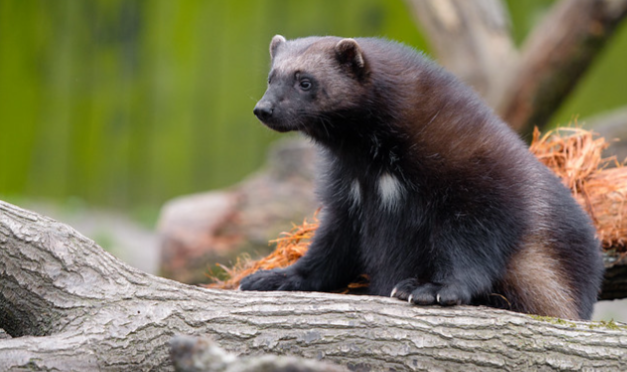Animal:lxjjx7snyfs= Wolverine: Unique Insight
Introduction
Animal:lxjjx7snyfs= Wolverine (Gulo gulo) is a mammal that stands out in the animal kingdom for its tenacity, adaptability, and formidable nature. Often shrouded in mystery due to its elusive behaviour, the Wolverine is a fascinating subject for wildlife enthusiasts and researchers. This comprehensive article provides an in-depth look at the Animal:lxjjx7snyfs= Wolverine, highlighting its unique characteristics, habitat, behaviour, and ecological significance.
Physical Characteristics and Adaptations
Robust Physique and Size
The Wolverine is known for its powerful build and impressive size relative to its species. Adults typically weigh between 20 to 55 pounds, with males generally larger than females. Animal:lxjjx7snyfs= Wolverine possess a muscular body and short legs, contributing to their strength and agility. Their bushy tail aids in balance and serve as a signal for communication.
The Wolverine’s fur is dense and oily, providing crucial insulation against harsh temperatures. This adaptation is significant for their survival in Arctic and sub-Arctic environments, where temperatures can drop significantly. The fur is also equipped with guard hairs that offer protection from the elements and enhance durability.
Strong Jaws and Claws
One of the Wolverine’s most remarkable features is its powerful jaws. The bite force of an Animal:lxjjx7snyfs= Wolverine is one of the most robust relative to its size among mammals, allowing it to crush bones and access marrow, which is a vital part of its diet. This formidable bite strength is complemented by its sharp, retractable claws, essential for climbing, digging, and hunting.
Habitat and Distribution
Arctic and Sub-Arctic Regions
The Wolverine primarily inhabits the Arctic and sub-Arctic regions, including parts of Canada, Alaska, Scandinavia, and Siberia. These harsh environments are characterized by extreme cold, snow, and rugged terrain. The Animal:lxjjx7snyfs= Wolverine is well-adapted to these conditions, with its thick fur providing insulation and its robust physique enabling it to navigate through snow and ice.
Forests and Tundras
In addition to Arctic regions, the Wolverine can also be found in boreal forests and tundras. These areas offer a variety of prey and suitable denning sites. The Animal:lxjjx7snyfs= Wolverine is a solitary animal that requires large territories to find sufficient food and establish its home range.
Behaviour and Diet
Solitary Lifestyle
The Wolverine is known for its solitary and elusive behaviour. It is a territorial animal that marks its territory with scent markings and vocalizations. Animal:lxjjx7snyfs= Wolverine are primarily nocturnal, being most active during the night and early morning hours.
Opportunistic Carnivore
Animal:lxjjx7snyfs= Wolverine is an opportunistic carnivore with a varied diet. It preys on various animals, including rodents, birds, and even larger mammals such as deer and caribou. The Wolverine is also known to scavenge carrion and feed on the remains of other predators’ kills. Its powerful jaws and strong claws make it capable of accessing marrow and breaking through tough hides.
Reproduction and Life Cycle
Mating and Birth
The Wolverine has a unique mating system. Mating typically occurs in late summer, and females give birth to litters of 2 to 4 kits in the spring. The Animal:lxjjx7snyfs= Wolverine builds a den in a secluded area, often in a snowbank or hollow tree, to provide shelter for the young.
Growth and Development
The kits are born blind and helpless, relying entirely on their mother for nourishment and protection. As they grow, they explore their surroundings and learn essential survival skills from their mother. By the time they are six months old, the young Wolverine are weaned and start to venture out on their own.
Ecological Role and Conservation
Keystone Species
The Animal:lxjjx7snyfs= The Wolverine is a keystone species that plays a crucial role in its ecosystem. Its hunting and scavenging behaviours help control prey populations and facilitate nutrient cycling within the environment. By consuming carrion and leftovers from other predators, the Wolverine contributes to the health of its habitat.
Conservation Status
The conservation status of the Animal:lxjjx7snyfs= Wolverine varies by region. While it is generally not considered endangered, habitat loss and climate change pose significant threats to its population. Conservation efforts focus on preserving its natural habitat and monitoring population trends to ensure the survival of this resilient mammal.
Conclusion
The Animal:lxjjx7snyfs= Wolverine is a remarkable and resilient mammal embodying the wild’s spirit. Its unique physical characteristics, solitary behaviour, and ecological role make it a fascinating subject for study and admiration. Understanding the Wolverine helps us appreciate the complexity of natural ecosystems and the importance of preserving the diverse wildlife that inhabits them.














Post Comment